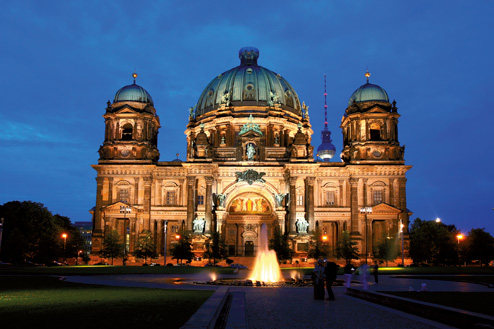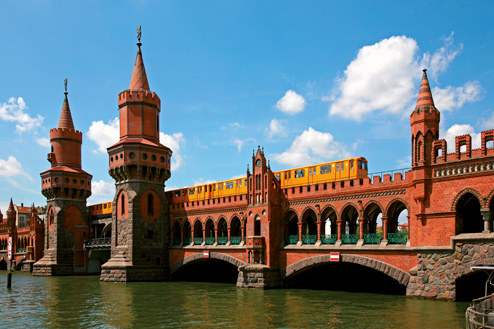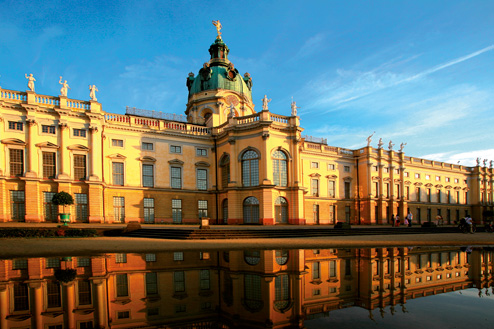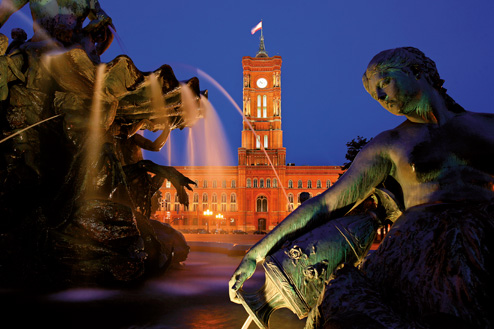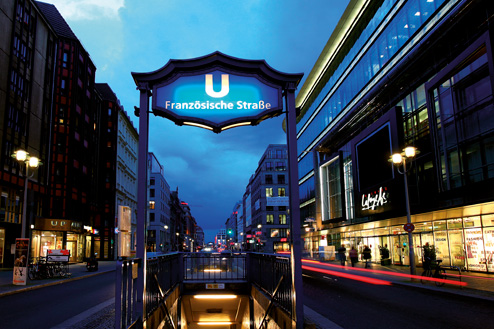Germany Overview
As the world’s third-largest economy after the United States and Japan, Germany is the motor of the European Union. Its advanced industrial base, producing high-quality manufactured goods, has made the country the world’s leading exporter. This is a particularly impressive feat for a nation with such a dearth of natural resources. France, the United States and Britain are the top destinations for German goods, while France, the Netherlands and China account for the greatest slice of Germany’s imports.
In 2006, German exports totalled €893 billion and imports were worth €734 billion. German car-makers Mercedes, BMW and Volkswagen might be household names around the world, but it’s the rather unglamorous sector of machine tools and other big-ticket industrial products where the label ‘Made in Germany’ really racks up sales abroad. Manufacturing and industry still make up more than a quarter of all value added to the Germany economy, but more than 70% of Germans now work in the service sector.
Although Germany is the EU’s largest producer of milk and pork, as well as the second biggest producer of potatoes and grains, agriculture accounts for only 1% of the country’s total economic output. German leaders see greater investment in high-tech industries and research and development (R&D) as the best way for the country to compete amid increasing globalisation. According to the Organisation for Economic Cooperation and Development (OEDC), Germany is a world leader in scientific patents and cutting-edge fields such as biotechnology. German gross domestic expenditure on R&D hit 2.5% of GDP in 2005, putting the country in the top 10 of OECD members.
After struggling with stagnating growth and high unemployment at the beginning of the decade, Germany’s economy is once again humming. Gross Domestic Product grew a solid 2.5% in 2007, down slightly from 2.9% in 2006. Despite the marginal slowdown and a strong euro, the government managed to post its first balanced budget since 1969 and German exports grew by 8.3% in 2007. Perhaps more importantly the country’s long-troubled labour market continued to improve, as the overall number of employed people increased 1.7%. A package of widely despised labour reforms and cuts to Germany’s generous welfare benefits – known as Agenda 2010 and pushed through by former chancellor Gerhard Schröder – is largely credited with making Germany’s economy more competitive in recent years.
Structural problems following German reunification in 1990 remain. Eastern Germany has come a long way over the past 18 years, but the job is still not quite done. Unemployment remains considerably higher in the east – in December 2007 joblessness hovered at 13.7%, while it was only 6.7% in the west and 8.1% nationally.
Average annual salaries in Germany range from €31,000 for industrial labourers to €77,000 for managers. People working in crafts and trades – anything from a carpenter to a butcher – make on average €12.51 per hour. Wages are frequently lower in eastern Germany than in the west.
In 2006, German exports totalled €893 billion and imports were worth €734 billion. German car-makers Mercedes, BMW and Volkswagen might be household names around the world, but it’s the rather unglamorous sector of machine tools and other big-ticket industrial products where the label ‘Made in Germany’ really racks up sales abroad. Manufacturing and industry still make up more than a quarter of all value added to the Germany economy, but more than 70% of Germans now work in the service sector.
Although Germany is the EU’s largest producer of milk and pork, as well as the second biggest producer of potatoes and grains, agriculture accounts for only 1% of the country’s total economic output. German leaders see greater investment in high-tech industries and research and development (R&D) as the best way for the country to compete amid increasing globalisation. According to the Organisation for Economic Cooperation and Development (OEDC), Germany is a world leader in scientific patents and cutting-edge fields such as biotechnology. German gross domestic expenditure on R&D hit 2.5% of GDP in 2005, putting the country in the top 10 of OECD members.
After struggling with stagnating growth and high unemployment at the beginning of the decade, Germany’s economy is once again humming. Gross Domestic Product grew a solid 2.5% in 2007, down slightly from 2.9% in 2006. Despite the marginal slowdown and a strong euro, the government managed to post its first balanced budget since 1969 and German exports grew by 8.3% in 2007. Perhaps more importantly the country’s long-troubled labour market continued to improve, as the overall number of employed people increased 1.7%. A package of widely despised labour reforms and cuts to Germany’s generous welfare benefits – known as Agenda 2010 and pushed through by former chancellor Gerhard Schröder – is largely credited with making Germany’s economy more competitive in recent years.
Structural problems following German reunification in 1990 remain. Eastern Germany has come a long way over the past 18 years, but the job is still not quite done. Unemployment remains considerably higher in the east – in December 2007 joblessness hovered at 13.7%, while it was only 6.7% in the west and 8.1% nationally.
Average annual salaries in Germany range from €31,000 for industrial labourers to €77,000 for managers. People working in crafts and trades – anything from a carpenter to a butcher – make on average €12.51 per hour. Wages are frequently lower in eastern Germany than in the west.

